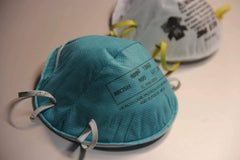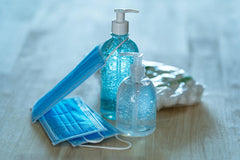FluShields Takes You On A Journey To Learn Everything About How Good Hand Sanitizers Really Are.
 Photo by Anna Shvets from Pexels
Photo by Anna Shvets from Pexels
Hand sanitizers can also be used at the entrances of nursing homes and hospitals and in a variety of public washrooms. We also know the value of good hand-washing to eliminate dangerous germ spread. However, there are periods where there is no recourse to soap and water, or when there is not enough time to wash thoroughly. Will a hand sanitizer act as an acceptable complement to hand washing? Anyone who has been in the playground with a child has seen it. When the children get out of the play equipment, the mothers grab their hand sanitizer in their bag. And the child is given a dab of sanitizer to rub into her hands to prevent the germs that have been transmitted to her skin. It is hoped that this approach would make children, and thus their families, safer. When using hand sanitizer, apply the product to the palm of one hand (read the label to learn the correct amount) and rub the product all over the surfaces of your hands until your hands are dry. The steps for hand sanitizer use are based on a simplified procedure recommended by the CDC. Instructing people to cover all surfaces of both hands with hand sanitizer has been found to provide similar disinfection effectiveness as providing detailed steps for rubbing-in hand sanitizer.Many studies show that hand sanitizers work well in clinical settings like hospitals, where hands come into contact with germs but generally are not heavily soiled or greasy. Some data also show that hand sanitizers may work well against certain types of germs on slightly soiled hands. However, hands may become very greasy or soiled in community settings, such as after people handle food, play sports, work in the garden, or go camping or fishing. When hands are heavily soiled or greasy, hand sanitizers may not work well.
Handwashing with soap and water is recommended in such circumstances.
Although few studies have been conducted, hand sanitizers probably cannot remove or inactivate many types of harmful chemicals. In one study, people who reported using hand sanitizer to clean hands had increased levels of pesticides in their bodies. If hands have touched harmful chemicals, wash carefully with soap and water (or as directed by a poison control center).
If soap and water are not available, use an alcohol-based hand sanitizer that contains at least 60% alcohol. Many studies have found that sanitizers with an alcohol concentration between 60–95% are more effective at killing germs than those with a lower alcohol concentration or non-alcohol-based hand sanitizers. Hand sanitizers without 60-95% alcohol 1) may not work equally well for many types of germs, and 2) merely reduce the growth of germs rather than kill them outright.
90% of alcohol rubs are supposed to be more effective against viruses than most other forms of hand washing. Isopropyl alcohol will kill 99.99 % or more of all non-spore-forming bacteria in less than 30 seconds, both in the laboratory and on human skin. Alcohol rub sanitizers kill most bacteria, and fungi, and stop some viruses.
But CDC recommends washing hands with soap and water whenever possible because hand washing reduces the amounts of all types of germs and chemicals on hands. But if soap and water are not available, using a hand sanitizer with at least 60% alcohol can help you avoid getting sick and spreading germs to others. The guidance for effective handwashing and the use of hand sanitizer in community settings was developed based on data from a number of studies. 👇 FluShields donates 3% of every order you place. You can top, round up, or give as much as you fancy at checkout. Our team and our customers like you are proud to have... Click the tiny info button for details 👆 When should I use a hand sanitizer?
Before and after visiting a friend or a loved one in a hospital or nursing home, unless the person is sick with Clostridium difficile
(if so, use soap and water to wash hands).
• If soap and water are not available, use an alcohol-based hand sanitizer that contains at least 60% alcohol, and wash with soap
and water as soon as you can.
* Do NOT use hand sanitizer if your hands are visibly dirty or greasy: for example, after gardening, playing outdoors, or after fishing or camping (unless a handwashing station is not available). Wash your hands with soap and water instead.
When Should I NOT use it?
- Hand sanitizer should not be used instead of soap and water when:
- Washing is convenient
- Your hands are greasy or visibly dirty
- You have chemicals on your hands
- You may have been exposed to infectious agents that aren't killed by hand sanitizer
- You're in a high-infection situation
How should I use hand sanitizer?
Use an alcohol-based hand sanitizer that contains at least 60% alcohol. Supervise young children when they use hand sanitizer
to prevent swallowing alcohol, especially in schools and childcare facilities.
• Apply. Put enough product on hands to cover all surfaces.
• Rub hands together until hands feel dry. This should take around 20 seconds.
Note: Do not rinse or wipe off the hand sanitizer before it’s dry; it may not work as well against germs.
How does it work?
As the sanitizers initially came out, there was no study about what they did and didn't do, but that improved. Further analysis has to be conducted, but scientists study more all the time. The active ingredient in hand sanitizers is isopropyl alcohol, a common type of alcohol ( ethanol or n-propanol), or a combination thereof. Alcohols have long been known to kill bacteria by dissolving their protective outer protein layer and destroying their metabolism. Data shows that hand sanitizer destroys germs as well as cleaning your hands with soap and water — unless your hands are clearly dirty or greasy. They still can not extract potentially dangerous contaminants.
Hand sanitizers also don't kill some common germs soap and water do eliminate, such as:
- Cryptosporidium
- Clostridium difficile
- Norovirus
What to look for in buying a hand sanitizer?
The CDC suggests sanitizers of at least 60% alcohol content. Most goods are between 60% and 95% but do not presume that the higher the percentages are more efficient. These goods will need to contain some water to operate at optimum quality. Some items on the market claim to sanitize the hands, but they contain very little to no alcohol at all. These goods are unlikely to provide you with sufficient security.
If you are using alcohol-based hand sanitizer pay attention to this information:
HAND SANITIZERS ARE DRUGS
Hand sanitizers are governed by the U.S. as over-the-counter (non-prescription) drugs by the U.S. Food and Drug Administration. If you are using alcohol-based hand sanitizers, read and observe the Drug Facts label, in particular the warnings section.
Keep hand sanitizer out of control of pets and children, and children can only use it under adult supervision. Don't drink a hand sanitizer. This is particularly important for young children, especially young children, who may be drawn by a nice scent or brightly colored bottles of hand sanitizer. Drinking even a small amount of hand sanitizer can cause alcohol poisoning in children.
During this coronavirus pandemic, poison control centers have elevated requests for unintentional consumption of hand sanitizers, so it is critical for adults to track the use of young children.
Don't allow pets to swallow a hand sanitizer. If you suspect your pet has eaten something potentially toxic, call your doctor or your pet poison control center right away.
DON'T MAKE YOUR OWN HAND SANITIZER
Although several supermarkets and pharmacies sell it, hand sanitizers can be difficult to obtain during this public health emergency. Even, the FDA would not recommend that customers produce their own hand sanitizers. If made poorly, the hand sanitizer can be inadequate – or worse. For example, cases of skin burns from homemade hand sanitizers have been reported.
It is also unlikely that adding alcohol to the non-alcohol hand sanitizer would result in a successful substance. And the use of disinfectant sprays or wipes on your skin can cause skin and eye irritation. Disinfectant sprays and wipes are meant to scrub surfaces, not humans or wildlife.
The FDA is seeking to improve the supply of hand sanitizers by partnering with businesses and retailers to counter this lack of supplies. The FDA has recently produced policy guidelines for the immediate procurement of hand sanitizers by some pharmacists and other organizations during the public health emergency COVID-19.
Using a hand sanitizer decreases microbial counts and destroys many infectious germs that may infect workers with influenza and other viruses. In order to sustain a safe and stable atmosphere in the workplace, it is important that workers take into account the welfare of their workers.
The supply of hand sanitizers for workers, on desks and in public areas is just as necessary as the availability of the required equipment and resources to carry out their jobs.
Good news: You can actually protect yourself as much as possible by wearing an N95 respirator mask: Get your N95 respirator masks for the whole family today.
90% of alcohol rubs are supposed to be more effective against viruses than most other forms of hand washing. Isopropyl alcohol will kill 99.99 % or more of all non-spore-forming bacteria in less than 30 seconds, both in the laboratory and on human skin. Alcohol rub sanitizers kill most bacteria, and fungi, and stop some viruses.
But CDC recommends washing hands with soap and water whenever possible because hand washing reduces the amounts of all types of germs and chemicals on hands. But if soap and water are not available, using a hand sanitizer with at least 60% alcohol can help you avoid getting sick and spreading germs to others. The guidance for effective handwashing and the use of hand sanitizer in community settings was developed based on data from a number of studies.
Good news: You can actually protect yourself as much as possible by wearing an N95 respirator mask: Get your N95 respirator masks for the whole family today.
Disclaimer: Please note that we can only pass on general information and cannot make any guarantees or be liable for any consequences of your decision making or behavior. Use good common sense and ask your healthcare provider or physician for advice.
Thanks for stopping by.
Please leave your comments, ideas, or feedback below so we can continue to provide you with great content.
Join Airbnb and get up to $50 off your first trip!






